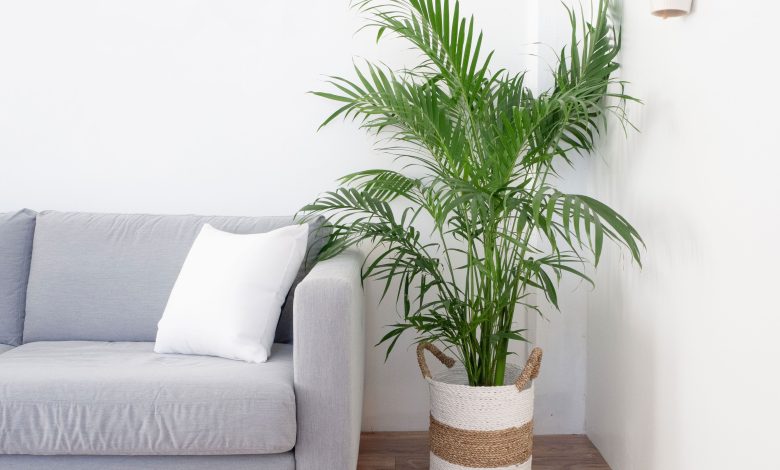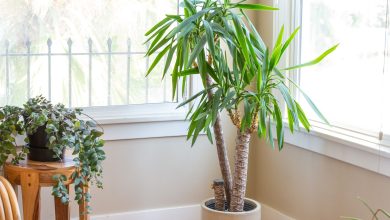Cultivate Living Room Palm Tree: [Light, Care, Substrate and Irrigation]

The parlor palm or Chamedorea elegans is the ideal plant to decorate the interior of the home, but it can also be placed on the porch, in corners, on the patio or in the garden.
It comes from Central America, it can reach a height of two meters in pots, its leaves are compound, dark green, and it is a plant that can have male and female flowers.
It can be potted permanently, but this pot should be about two square centimeters wider than the plant.
Characteristics of the parlor palm tree
 Botanical name: Chamedorea elegans.
Botanical name: Chamedorea elegans.- Common name: Parlor palm.
- Plant type: Woody perennial.
- Mature size: Varies from a very small plant to a large tree.
- Sun exposure: Bright, indirect light.
- Type of soil: Wet, loose and porous soil.
- Soil pH: Slightly acidic to neutral.
- Flowering time: All year (although it is difficult indoors).
- Native Area: Worldwide; South America, the Caribbean, and areas of the South Pacific and South Asia are regions of concentration.
Temperature: What needs does the living room palm tree have?
 It can withstand temperatures of three or four degrees below zero, but for a short time, not permanently, because it is not a friend of frost, so in winter it must be very sheltered.
It can withstand temperatures of three or four degrees below zero, but for a short time, not permanently, because it is not a friend of frost, so in winter it must be very sheltered.
As it does not resist the cold, its ideal environment is the Mediterranean climate where it can live outdoors.
Light: Where to plant a living room palm tree?
If it is inside the house, it must be located in a place where it has enough light, although not too intense because it can burn.
For this same reason it should not be exposed to direct sunlight; that is, it must be in shade or semi-shade.
Substrate and fertilizer. How do we prepare the land?
The soil or substrate must be fertile, the ideal fertilizer is the specific one for palm trees.
If the plant is in a warm climate where there are no frosts, the fertilizer should be applied between the months of March to October, but also in November.
In summer, the fertilizer should be placed every fifteen days with a compound fertilizer or use fertilizer for green indoor plants.
We must be careful with the fertilizer to use because the excess of this burns the tips of the leaves of the palm tree.
Irrigation: How and how often do we water?
 The living room palm gets along very well with a humid environment, although it also adapts to dry air.
The living room palm gets along very well with a humid environment, although it also adapts to dry air.
For this reason, it should not lack moderate humidity, especially in summer and winter, especially when we are going to change the pot, although this will happen very rarely because the living room palm can have the same pot for life.
The plant must be watered three times a week in summer and every fifteen days in winter.
We must not let the earth dry up; in that case we must water, and in summer it is convenient to spray every day with water.
fertilizers
Fertilize your palm regularly throughout the growing season.
If possible, use a specific fertilizer for palm trees, containing all the micronutrients and extra potassium and manganese. Potassium deficiency is especially common in palm trees, manifesting itself in yellowing or brown leaves.
Parlor Palm Pests and Diseases
 Spider mites are the most common pest that can attack indoor palm trees. Keeping the humidity level high in the air around the plant will help it to fend off mites and will also benefit the plant.
Spider mites are the most common pest that can attack indoor palm trees. Keeping the humidity level high in the air around the plant will help it to fend off mites and will also benefit the plant.
Mealybugs and mealybugs can also be a problem, but are much less common.
If you discover that your parlor palm tree has bed bugs, begin treatment immediately. Do not use chemical pesticides on indoor plant pests, in addition to not being very effective they can cause health problems for both humans and pets.
We recommend the use of organic neem oil, which is a natural pesticide. I also like to use a mixture of one teaspoon of Dr. Bronner’s Baby-mild liquid soap per quart of water to help control bugs.
Insecticidal soap or vegetable oil also work very well. Learn more about how to get rid of houseplant bugs here.
Common problems in indoor palm trees
One of the most common problems that parlor palms have is brown leaves and tips.
Why do the tips of the leaves turn brown? Here are some common causes…
- The lack of water.
- Excessive use of chemical fertilizers.
- Spider mites.
If you’ve had your parlor palm for a while and haven’t used chemical fertilizers on it, then look closely to see if it has spider mites. If it’s clean, then check the soil and make sure it’s not too dry.
To make your parlor palms look nice, simply trim off the brown tips.
Benefits of having living room palm trees in your home
Palm trees make great houseplants because they are very tolerant of little attention, but they will grow better when given proper care.
These easy-care houseplants are perfect for most homeowners because they don’t like a lot of light, and will easily adapt to growing indoors.
In addition, palm plants help clean the air in our homes, which is another wonderful benefit.
Houseplants can live for many years if properly cared for, and some palm varieties can grow into huge palms in containers indoors.


![Photo of Learn to Plant Corn: [12 Steps] and Much More](https://www.complete-gardening.com/wp-content/uploads/2022/08/learn-to-plant-corn-12-steps-and-much-more-390x220.jpg)
![Photo of Zucchini Varieties: [Characteristics and Classification]](https://www.complete-gardening.com/wp-content/uploads/2022/08/zucchini-varieties-characteristics-and-classification-390x220.jpg)
